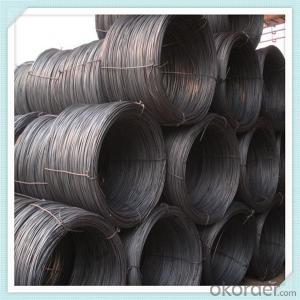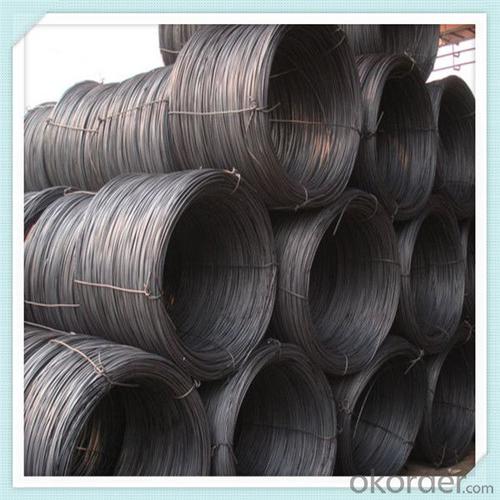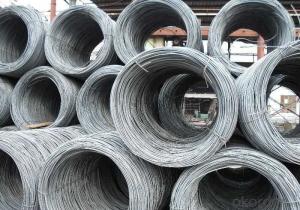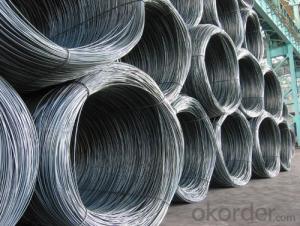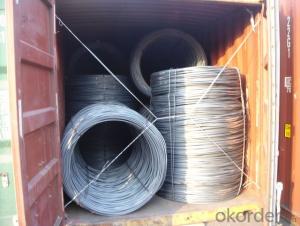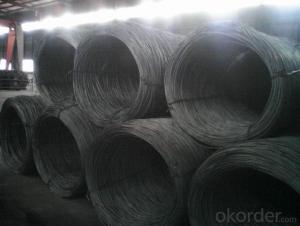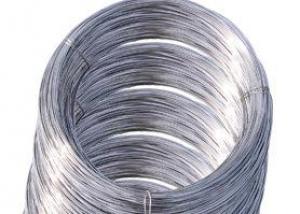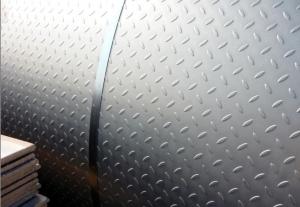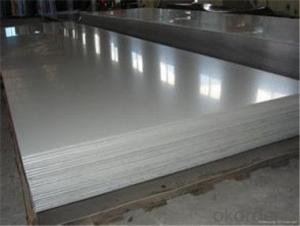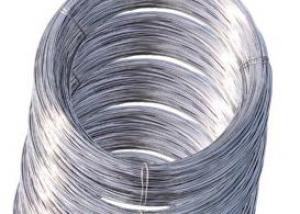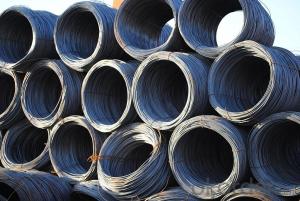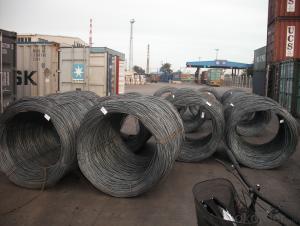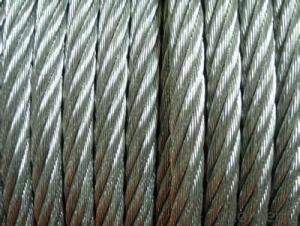Q235 Steel wire rod hot rolled from china
- Loading Port:
- Dalian
- Payment Terms:
- TT OR LC
- Min Order Qty:
- 1000 m.t.
- Supply Capability:
- 17531 m.t./month
OKorder Service Pledge
OKorder Financial Service
You Might Also Like
Specification
Steel wire is mainly used for prestressed and posttensioning technology in various shapes of prestressed
concrete structures,and widely used for civil engineering construction, such as large scale railroad, highway
bridges, building trusses, overhead crane beams, industrial and prefabricated concrete floor, wall board,
tubular piles, PC water pipes, TV towers and nuclear power station, ETC. Active strandards:GB/T5223,
ASTMA421, BS5896, JISG3536, ISO6934, EN10138 or other special required standards.
Features
1、Pure steel quality, stable chemical contents, small tolerance.
2、Constant Quality, good drawing performance.
3、High dimension accuracy degree, accuracy degree of Level C up to 80%, smooth surface, less scale,
easy to be pickled.
4、Automatic bundling with 4 lines by Machine in tidy and good looks
5、Big high quality percentage, small coil percentage, and heavy coil weight for Hard Coil.
6、High sorbitizing percentage.
Product Description :
Standard | AISI, ASTM, BS, DIN, GB, JIS |
Material/steel grade | Q195-Q235,SAE1006B,SAE1006CR, SAE1008B, SAE1008CR, SAE1010B, SAE1018B, or according to customers requirements |
Wire Gauge | 5.5-12mm |
Coil weight | 1.8-2.1mts |
MOQ | 25MT |
Delivery Time | 15-30 days after receipt of L/C or deposit by T/T |
Packing | In coil and load in container, if large quantity, by bulk vessel; Can be packed as customers' special requirements |
Payment terms | 1).100% irrevocable L/C at sight. 2).30% T/T prepaid and the balance against the copy of B/L. 3).30% T/T prepaid and the balance against L/C |
Application | widely used in machinery parts, manufacturing industry, electronics industry, metal tools and others |
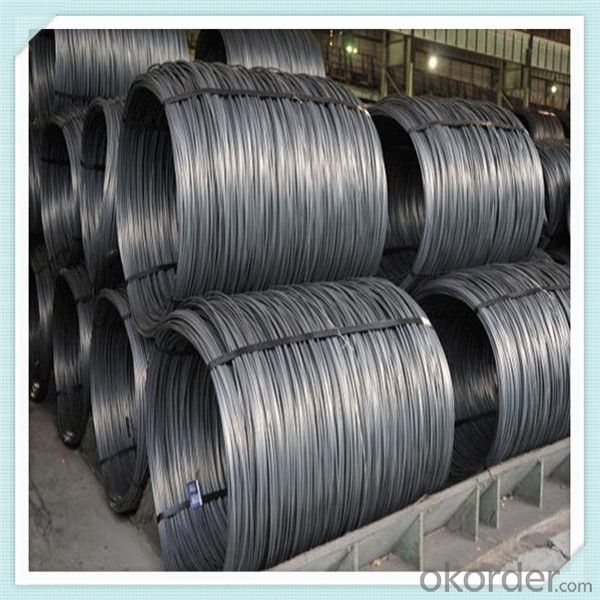
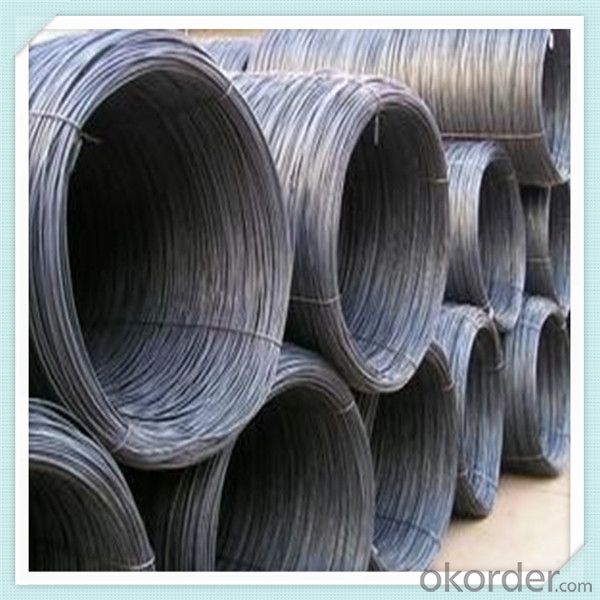
Application :
It generally used in braiding the hose for bathing product and machinery. With it
good flexibility, resistant to high temperature and resistant to corrosion, it
used widely in many industries.
Packing :
Hot-rolled wire rod is held in a unit with at least four steel straps in the
transverse direction and transported and stored without further packaging.
Before
the steel strapping is applied, the wire rod must be sufficiently compressed.
The strapping is fixed in the transverse direction with a single circumferential
strap so that the strapping does not slip and cause the coil to come apart.
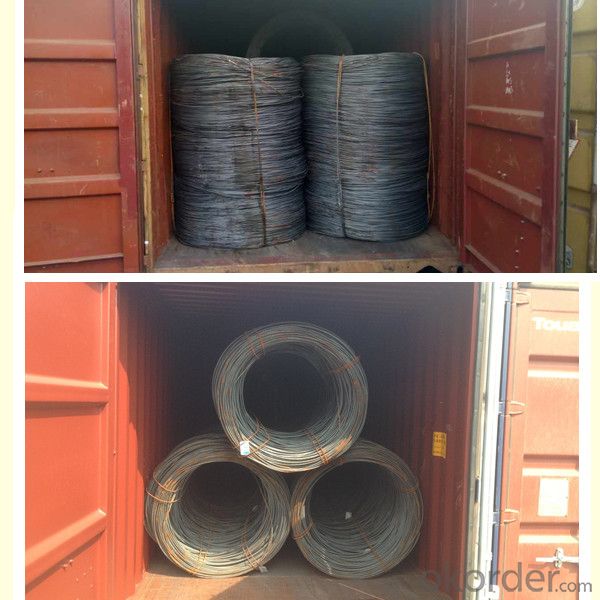
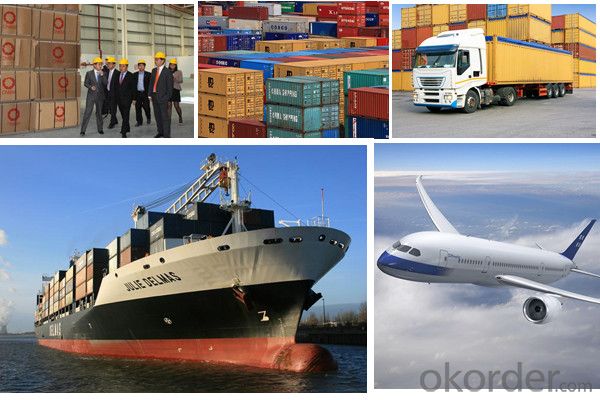
Our service:
(1) We cooperate with famous factories with advanced equipment and well trained workers.
(2) We can provide factory price with trading company service.
(3) We continuously work on the improvement of our processes, guaranteeing
consistently high standards of quality to keep none compensation.
(4) We guarantee 24 hours response and 48 hours solution providing service.
(5) We accept small order quantity before formal cooperation.
(6) We deliver the agreed quality at the agreed time, reacting to changes in
customer wishes in a flexible way.
(7) Due to our volume and selling power, we have excellent freight rates with
shipping lines.
(8) We strive to always be fair and honest in our dealings with customers.
(9) We strive to work together with customers to achieve much more than we can
achieve alone.
(10) Through our passion and commitment we aim to be a market leader in all our
key markets. To maintain our position as market leader we must continue to add
value in all that we do.
FAQ:
1.Q: What's your MOQ(minimum order quantity)?
A: One full container, mixed acceptable .
2. Q: What's your packing methods?
A: Packed in bundle or bulk ..
3. Q: How can I buy CNBM products in my country?
A:Please send us an inquiry or email ,we will reply to you if there is distributor in your country
4. Q: Can we visit your factory?
A: Warmly welcome. Once we have your schedule, we will arrange the
professional sales team to follow up your case.
5. Q: How long does it take to get the product if i place an order?
A:With the process of your requirements,we will pack and deliver in 3
-7 days. If it is by sea shipment,it will take 15-45 days depending on different locations
- Q: What are the safety standards for steel wire rod used in construction?
- The safety standards for steel wire rod used in construction vary depending on the specific application and local regulations. However, some general safety standards include ensuring the wire rod meets the required strength and quality specifications, proper storage and handling to prevent damage or injury, regular inspection for defects or signs of wear, and adherence to proper installation and usage guidelines. Additionally, safety standards may also dictate the use of personal protective equipment and training for workers involved in handling or working with steel wire rod in construction projects. It is essential to consult relevant industry guidelines and local regulations to ensure compliance with specific safety standards.
- Q: What are the main factors affecting the market segmentation of steel wire rod?
- The main factors affecting the market segmentation of steel wire rod include the industry demand, application requirements, geographical location, and price sensitivity of the consumers. Additionally, factors such as quality standards, technological advancements, and competition within the market also play a significant role in segmenting the steel wire rod market.
- Q: What are the main factors affecting the product competitiveness of steel wire rod?
- The main factors affecting the product competitiveness of steel wire rod include the quality and consistency of the product, pricing competitiveness, delivery reliability, customer service, technical support, and the ability to meet specific customer requirements. Additionally, factors such as the reputation and brand image of the manufacturer, market demand and trends, competition from other suppliers, and the cost and availability of raw materials also play a significant role in determining the product's competitiveness.
- Q: How is steel wire rod used in the manufacturing of wire connectors?
- Steel wire rod is used in the manufacturing of wire connectors as the main raw material. It is drawn and shaped into the desired form, providing the strength and durability required for connecting wires securely. The steel wire rod is typically coated or plated to improve its conductivity and corrosion resistance, ensuring reliable electrical connections.
- Q: How does the yield strength of steel wire rod vary with different heat treatment processes?
- The yield strength of steel wire rod can exhibit significant variations depending on the heat treatment processes employed. Heat treatment involves controlled heating and cooling of metals to modify their physical and mechanical characteristics. In the case of steel wire rod, heat treatment can induce alterations in the material's microstructure, consequently impacting its yield strength. One commonly utilized heat treatment method for steel wire rod is referred to as annealing. This technique entails heating the rod to a specific temperature, typically surpassing its critical temperature, followed by gradual cooling. Annealing serves to alleviate internal stresses, refine the microstructure, and enhance the steel's ductility. Consequently, the yield strength of the wire rod generally decreases following annealing. Alternatively, another heat treatment process known as quenching and tempering can significantly augment the yield strength of steel wire rod. Quenching involves rapidly cooling the heated rod in a liquid medium, such as oil or water, to attain a hardened structure. This process results in the formation of martensite, a rigid and brittle phase within the steel. However, martensite is also highly stressed and prone to cracking, necessitating further heat treatment to enhance its toughness. This is accomplished through tempering, whereby the quenched material is subjected to a specific temperature and subsequently cooled once again. Tempering diminishes the internal stresses within the martensite, leading to the creation of a more stable microstructure characterized by improved toughness and heightened yield strength. In essence, the yield strength of steel wire rod can exhibit variability depending on the employed heat treatment methods. Annealing generally diminishes the yield strength by enhancing ductility, whereas quenching and tempering can substantially increase the yield strength by generating a harder and more robust microstructure. The selection of a heat treatment process is contingent upon the desired mechanical properties and intended application of the steel wire rod.
- Q: How is the global steel wire rod market expected to grow?
- The global steel wire rod market is expected to grow steadily due to increasing construction and infrastructure projects worldwide, as well as the rising demand for automotive and manufacturing industries. Additionally, the ongoing technological advancements and innovations in steel wire rod production are further driving market growth.
- Q: How is steel wire rod processed to achieve specific properties?
- Steel wire rod can be processed to achieve specific properties through various methods such as heat treatment, cold working, and alloying. Heat treatment involves subjecting the rod to controlled heating and cooling processes to alter its microstructure and enhance desired properties like strength and ductility. Cold working, on the other hand, involves mechanically deforming the rod at room temperature to increase its strength and hardness. Alloying, which involves adding specific elements to the steel composition, can further enhance properties such as corrosion resistance, electrical conductivity, or magnetic properties. These processing techniques are carefully chosen and applied to achieve the desired properties required for the intended application of the steel wire rod.
- Q: What are the common applications of bright steel wire rod?
- Bright steel wire rod, with its versatility and excellent properties, is widely utilized in various industries. It finds common applications in wire drawing processes, where it can be easily drawn into thinner diameters to produce wires for fencing, cables, springs, and electrical conductors. In the production of fasteners such as screws, bolts, and nails, the high strength and rigidity of bright steel wire rod ensure a secure connection and can withstand heavy loads. Additionally, the bright surface finish enhances the aesthetic appeal of the finished fasteners. In the automotive industry, bright steel wire rods are extensively employed for suspension springs, seat springs, engine valve springs, and other components requiring durability and high strength. They are also used for making tire reinforcements, ensuring the tires maintain their shape and offer superior performance. In the construction industry, bright steel wire rods play a vital role in reinforcing concrete structures. They are commonly used for producing welded wire mesh, which reinforces concrete slabs, walls, and other structures, guaranteeing their structural integrity. The manufacturing industry also heavily relies on bright steel wire rods for various applications. They are utilized in the production of wire ropes, springs, cables, and mesh screens. Additionally, they are used in fabricating metal products like wire baskets, racks, and shelves. In the electrical industry, bright steel wire rods are indispensable for the production of electrical conductors, cables, connectors, terminals, and contacts. Their high conductivity ensures efficient transmission of electricity. Overall, bright steel wire rods, with their exceptional strength, ductility, and versatility, are crucial materials across a wide range of industries. Their applications span wire drawing processes, fasteners, automotive components, construction reinforcement, manufacturing, and electrical products.
- Q: How is steel wire rod used in the production of tire cords?
- Steel wire rod is used in the production of tire cords as it serves as the primary material for reinforcing the rubber in tires. The wire rod is first drawn into thin wires, which are then twisted and braided together to form strong and durable cords. These cords are embedded within the rubber during the tire manufacturing process, providing strength, stability, and resistance to punctures, ultimately enhancing the overall performance and safety of the tire.
- Q: What are the different international specifications for steel wire rod?
- There are several different international specifications for steel wire rod, which outline the specific requirements and characteristics that the wire rod must meet. Some of the most commonly used international specifications for steel wire rod include: 1. ASTM A510: This specification covers general requirements for carbon steel wire rods and applies to both hot-rolled and cold-finished wire rods. 2. EN 10016-2: This European standard specifies the general requirements for non-alloy steel rod and wire for cold heading and cold extrusion. 3. JIS G 3505: This Japanese Industrial Standard covers low carbon steel wire rods for general use, including welding wire, nails, and wire ropes. 4. GB/T 699: This Chinese national standard defines the technical requirements for carbon structural steels, including wire rods. 5. ISO 16120-4: This international standard specifies the general requirements for steel wire rod, including dimensional tolerances, mechanical properties, and testing methods. Additionally, various industry-specific standards and specifications may exist for steel wire rod used in specific applications, such as automotive, construction, or electrical industries. These may include standards from organizations like SAE International or specific customer requirements. It is essential to consult the relevant specifications when manufacturing or sourcing steel wire rod to ensure compliance with the required standards and meet the specific needs of the intended application.
Send your message to us
Q235 Steel wire rod hot rolled from china
- Loading Port:
- Dalian
- Payment Terms:
- TT OR LC
- Min Order Qty:
- 1000 m.t.
- Supply Capability:
- 17531 m.t./month
OKorder Service Pledge
OKorder Financial Service
Similar products
Hot products
Hot Searches
Related keywords
